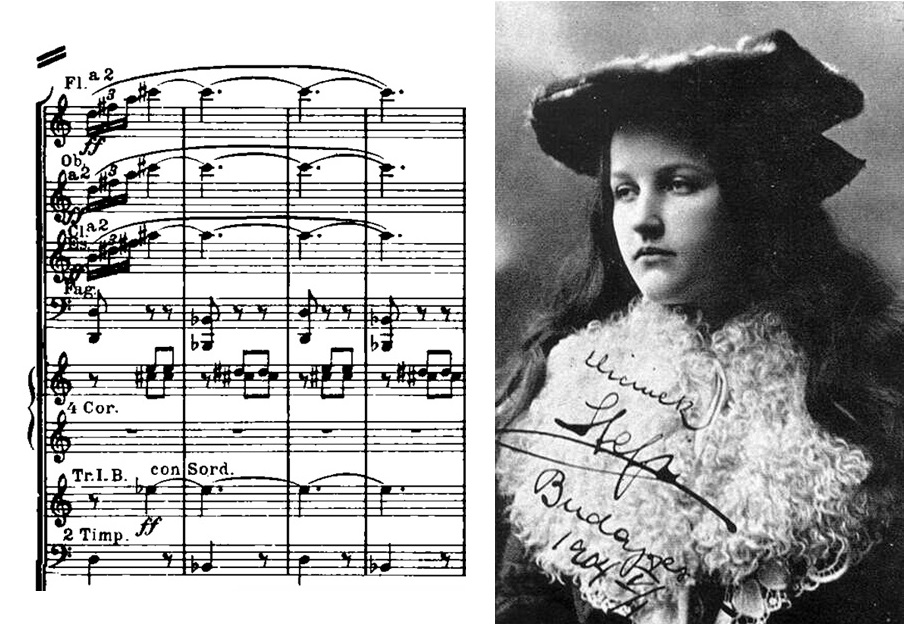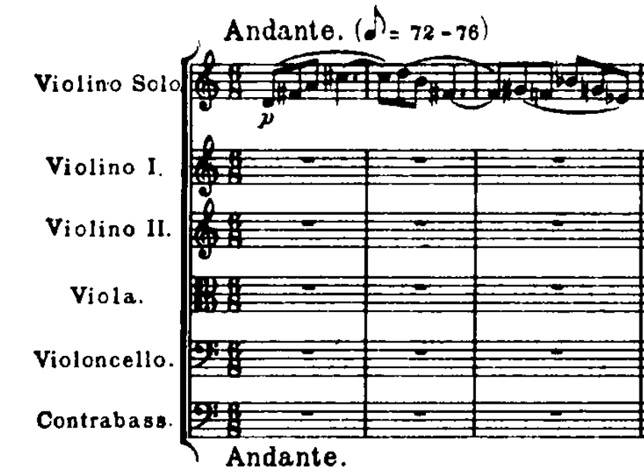- Humanities
- 20 de November de 2024
- No Comment
- 9 minutes read
The Fascinating “Stefi Chord” in Bartók’s Music

The Fascinating “Stefi Chord” in Bartók’s Music


Stefi Geyer (1888–1956) was a remarkably talented Hungarian violinist who caught Béla Bartók’s attention while she was studying violin at the Budapest Academy of Music, where Bartók had been teaching since 1907.
During the summer of that year, the nineteen-year-old violinist and the twenty-six-year-old composer developed a close relationship, both personally and creatively, which they nurtured through an intense correspondence. Inspired by Geyer’s captivating persona, Bartók began composing a violin concerto dedicated to her. In September 1907, he disclosed the existence of a recurring motif, which he referred to as “your Leitmotif.” This motif consisted of an ascending major chord capped with a dissonant major seventh interval—essentially the superposition of two perfect fifths. From an acoustic perspective, this harmony became a defining signature of Bartók’s style, as noted by scholars such as Ernő Lendvai.

https://www.youtube.com/watch?v=CLDn-F2Q4Gs&t=15s
However, following such a revelation, Bartók took to lecturing his beloved on the moral decline of the middle classes and bluntly expressed his atheism to Geyer, who was deeply committed to her Catholic faith, and often admonished her for what he saw as her reluctance to engage with the literature he prescribed to “refine” her intellectual development. By February 1908, Bartók had completed the concerto, knowing that Geyer was distancing herself from him. Their relationship cooled further as she finished her studies in Budapest and eventually settled in Vienna, where she married a lawyer.
Yet, the “Stefi Leitmotif” left an indelible mark on Bartók’s later music.
It resurfaced in his early folkloric works, such as the collection Bagatelles, Op. 6 (1908), where it appeared in the volume’s closing section, despite Bartók’s abrupt marriage to Márta Ziegler, another of his students, that same year.

https://www.youtube.com/watch?v=FPO6xJR6Jew&list=PLBS4VpTglwoARUmN2JTt_iadLpgPu2qCp&index=14
The motif also dominated Deux portraits, Op. 5 [Two Portraits (of Stefi)] (1907–1911), an orchestral work led by a solo violin. Here, Bartók juxtaposed two images of his muse: an idealised representation in the first section and a distorted reflection in the second—perhaps echoing Berlioz’s portrayal of his beloved in the finale of the Symphonie fantastique (1830).

https://www.youtube.com/watch?v=OGHNi0BDeVc

https://youtu.be/OGHNi0BDeVc?t=607
Bartók’s most sophisticated use of the “Stefi Leitmotif” appeared in his monumental opera Bluebeard’s Castle (1911). In this work, the motif, orchestrated with harp and clarinet, became the theme for the sensual Judith, again distinguished by its characteristic major seventh interval.

https://www.youtube.com/watch?v=9OBv52AzTGs
The opera, however, would not be premiered until 1918, at the end of the First World War. By this time, Stefi Geyer’s husband in Vienna had succumbed to the so-called Spanish influenza of 1919. She remarried in 1920, this time to a musician based in Zurich. Despite their earlier estrangement, Bartók and Geyer eventually renewed contact on amicable terms. During Bartók’s later years, Geyer facilitated his resettlement in the United States, where she had toured extensively during the interwar period.
Geyer preserved Bartók’s violin concerto manuscript until her death. Only after both Bartók’s passing in New York in 1945 and Geyer’s in Zurich in 1955 was the work finally performed. Its premiere took place in 1958 in Switzerland, supported by the patron Paul Sacher, a close friend of the violinist, with Hansheinz Schneeberger as the soloist. Isaac Stern later performed the concerto at Carnegie Hall in 1961.
Structured in two movements rather than the conventional three, the first movement offers an intimate portrayal of Stefi, while the second presents a contrasting, more playful character, reflecting the material explored in Deux portraits.
Source: educational EVIDENCE
Rights: Creative Commons

